Introduction
Ontario’s population is growing rapidly and good-paying jobs are being created. To help meet the needs of the province’s growing communities, Ontario’s Plan to Build is helping to attract historic automotive and clean steel investments, as well as getting key critical infrastructure projects built.
Building Ontario’s Economy for Today and Tomorrow
Leveraging Ontario’s Critical Minerals Advantage
Critical minerals such as cobalt, lithium, nickel and graphite are highly sought-after commodities in the global economy and Ontario has the potential to unlock these resources right here at home.
Through its Critical Minerals Strategy, the government is working with Indigenous communities to unlock the economic potential of the province's critical minerals in the North, including minerals in the Ring of Fire. To help build all-season roads to the Ring of Fire, the government is continuing to support Environmental Assessments for the Marten Falls Community Access Road, the Webequie Supply Road and the Northern Road Link, led by the Marten Falls First Nation and Webequie First Nation.
Strengthening Critical Mineral Exploration
To advance Ontario’s Critical Minerals Strategy and secure the province’s position as a global leader in supplying responsibly sourced critical minerals, the government is proposing to enhance the Ontario Focused Flow-Through Share Tax Credit. This enhancement would help stimulate critical mineral exploration in Ontario and improve access to capital for small mining exploration companies.
The proposed change would expand eligibility to specified critical minerals that qualify for the federal Critical Mineral Exploration Tax Credit starting with the 2023 tax year. This would result in an additional $12 million per year in tax credit support to the critical minerals mining industry.
See Annex: Details of Tax Measures and Other Legislative Initiatives for further information.
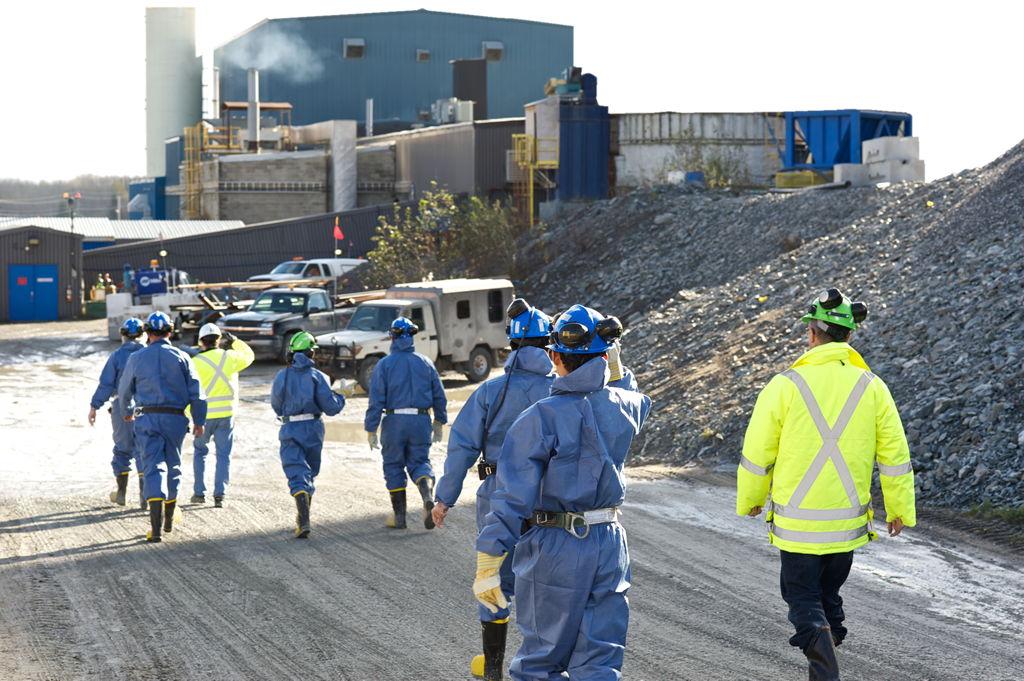
Attracting Manufacturing, Innovation and High-Paying Jobs
Bringing Manufacturing Jobs Back to Ontario
The government is helping to attract new investments in the manufacturing sector, which are creating thousands of new jobs in the province. In 2022, the manufacturing sector directly contributed $84.9 billion to provincial real gross domestic product (GDP). In the second quarter of 2023, real GDP in Ontario’s manufacturing sector rose by 2.9 per cent from the previous quarter. In 2022, Ontario’s manufacturing sector was also responsible for nearly half of Canada’s total manufacturing exports ($193.0 billion of Canada’s $418.3 billion in total exports).
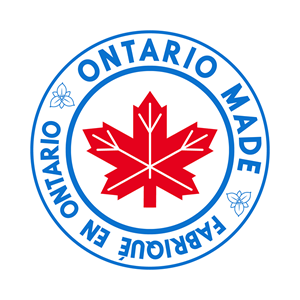
Employment in the manufacturing sector increased by 27,700 jobs over the first nine months of 2023, after increasing by 42,600 in 2021 and 11,900 in 2022 as the economy recovered from the impacts of COVID-19. By September 2023, the manufacturing sector employed 813,000 people, an increase of 49,600 jobs from the pre-pandemic level in February 2020.
The government continues to help build a strong and resilient manufacturing sector by attracting investments that will increase production, improve the province’s competitiveness and create good‑paying jobs across Ontario.
Attracting Investment Through the Ontario Made Manufacturing Investment Tax Credit
Ontario’s Plan to Build is working to attract and encourage the business investment needed to create jobs in the province’s manufacturing sector. As part of this plan, the government introduced the Ontario Made Manufacturing Investment Tax Credit in the 2023 Budget. This 10 per cent refundable Corporate Income Tax credit provides up to $2 million per year to qualifying Canadian-controlled private corporations that make eligible investments in buildings, machinery or equipment used in manufacturing or processing in the province.
The Ontario Made Manufacturing Investment Tax Credit will provide an estimated $780 million in income tax support over three years beginning in 2023–24, helping Ontario manufacturers lower their costs, innovate and become more competitive.
Making Ontario a Global Electric Vehicle Leader
The government is also strengthening Ontario's position as a global leader across the electric vehicle (EV) supply chain. Ontario is becoming a North American hub for building the cars of the future by attracting more than $26 billion over the last three years in transformative automotive and EV battery-related investments from global automakers, parts suppliers, and EV battery and materials manufacturers. This includes the following recent significant investments:
- LG Energy Solution and Stellantis are investing more than $5 billion towards the NextStar Energy EV battery manufacturing plant in Windsor, as announced in March 2022, supporting an estimated 2,500 jobs. In August, NextStar Energy began recruiting workers for the plant, which is expected to be fully operational by 2025.
- Magna International announced in February 2023 that it would invest $471 million to expand the company’s Ontario operations and support the opening of a new $265 million EV battery enclosure facility in Brampton.
- Volkswagen, one of the world’s largest automakers, and its subsidiary PowerCo SE, announced a $7 billion investment in April 2023 to build the automaker’s first overseas EV battery cell manufacturing plant in St. Thomas. The plant is the largest electric vehicle-related investment in Canadian history and is expected to create up to 3,000 direct jobs. Once complete in 2027, the plant will produce batteries for up to one million EVs per year. To support Volkswagen’s investment, the Ontario government is providing $500 million in direct incentives to the company and investing hundreds of millions of dollars more to strengthen and grow St. Thomas and the surrounding communities. This includes infrastructure improvements to roads, railways, water, electricity supply, and police and fire safety.
- Mitsui High-tec (Canada) Inc. announced a $102.3 million investment in June 2023 to open a new 103,500 square-foot manufacturing facility in Brantford to increase production of motor cores, the basic structure of the motor used in EVs.
- General Motors (GM) announced in July 2023 that a new facility at its CAMI Assembly in Ingersoll will begin building battery modules in the second quarter of 2024, supporting the company’s increasing EV production volume. The new 400,000 square-foot facility will assemble modules for BrightDrop Zevo production at CAMI Assembly as well as additional Ultium EVs built at other GM plants.
These investments are helping to increase the competitiveness of Ontario's auto sector. Ontario is the only jurisdiction in North America to have five major global automotive assemblers — Ford, General Motors, Honda, Stellantis and Toyota.

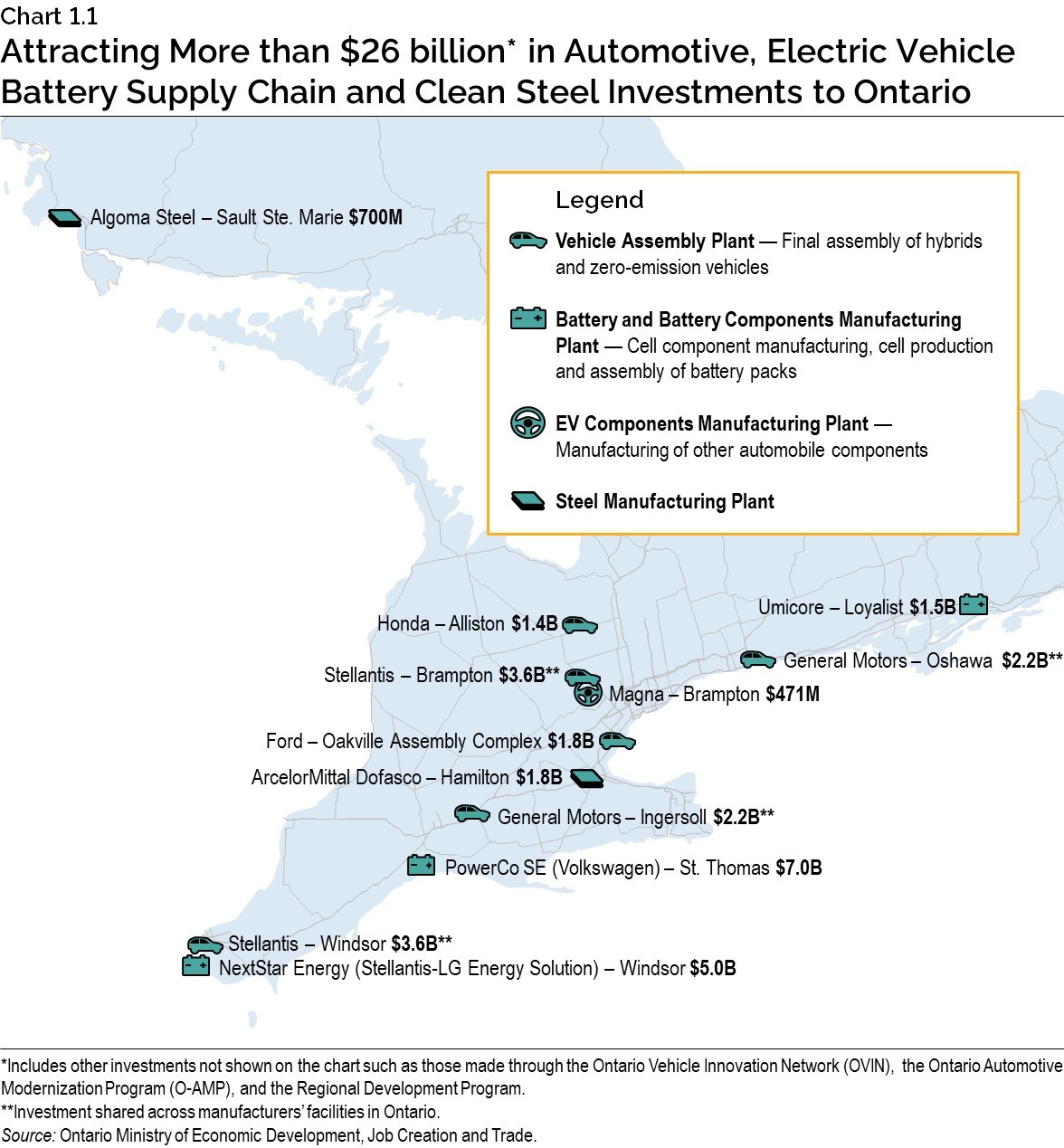
Supporting Better Jobs and Bigger Paycheques by Enhancing Invest Ontario
In July 2020, the government established its investment attraction agency, Invest Ontario, in response to increasingly fierce competition between jurisdictions in attracting business investments. The agency serves as a one-stop source for business information and tailored investment solutions. It provides facilitated access to all levels of government and local service providers as well as financial assistance through its Invest Ontario Fund.
Invest Ontario has attracted strategic investments that encourage innovation and support stronger supply chains in three strategic sectors where the province has a global competitive advantage — advanced manufacturing, life sciences and technology. For example, in June 2023, the agency supported a $102.3 million investment by the motor core parts manufacturer, Mitsui High-tec (Canada) Inc., by providing $3.1 million through its Invest Ontario Fund. The agency is on track to help secure an estimated $11 billion in investments that will generate over 6,000 new jobs.
Ontario will continue its plan to attract landmark investments in the economy by providing an additional $100 million to the Invest Ontario Fund, which will now total $500 million. This funding will help attract more leading companies to Ontario, further support businesses already here and create good-paying jobs in communities across the province.
Powering Ontario’s Growth
As Ontario is expecting to continue to see rapid population growth and investments, the province needs additional reliable, affordable, and clean energy that businesses can rely on. To meet growing electricity demand this decade, Ontario is expanding generation capacity, conducting Canada’s largest clean energy storage procurement, and expanding energy efficiency programs. The government is supporting the continued safe operation of the Pickering Nuclear Generating Station to 2026, while asking Ontario Power Generation (OPG) to review the potential refurbishment of the Pickering B units, supporting the refurbishment of the Darlington Nuclear Generating Station, the building of North America’s first grid-scale Small Modular Reactor (SMR) and the development of three additional SMRs.
The government is moving forward with plans to meet expected rising electricity demand in the 2030s and beyond. Ontario’s Independent Electricity System Operator (IESO) has recommended the province start early planning to meet expected long-term demand between 2030 and 2050. The government’s Powering Ontario’s Growth plan, released in July 2023, outlines actions to meet growing energy demand over the long run, which includes starting pre-development work for a large-scale nuclear station, advancing three additional SMRs at the Darlington nuclear site, planning for strategic new transmission lines, and developing long-duration storage projects.
Expanding Electricity Transmission Infrastructure
In addition to generating resources, new electricity transmission infrastructure is needed to meet growing electricity demand in the province. Last year, Ontario acted to ensure the efficient and timely development of five new electricity transmission infrastructure projects in Southwestern Ontario. Additional new projects proposed in the coming years include:
- Three new transmission lines in Northeastern Ontario to power forecast electricity growth, such as in the Sault Ste. Marie and Timmins areas, including from the conversion from coal to electric arc furnaces at Algoma Steel as well as from growth in the mining sector; and
- One new transmission line to power growth in the Ottawa region and across Eastern Ontario.
These projects total to more than 2,400 megawatts (MW) in new transmission capacity. Transmission is critical to providing reliable, affordable, clean electricity to families and businesses; and the future expansion of the transmission system is key to enhancing Ontario’s clean energy advantage, enabling industrial electrification and growth, as well as supporting electric vehicle adoption.
The Ontario Infrastructure Bank provides additional opportunities for the government to work with Indigenous communities and other partners to continue building more electricity transmission infrastructure. See section Building Highways, Transit and Infrastructure for further details.
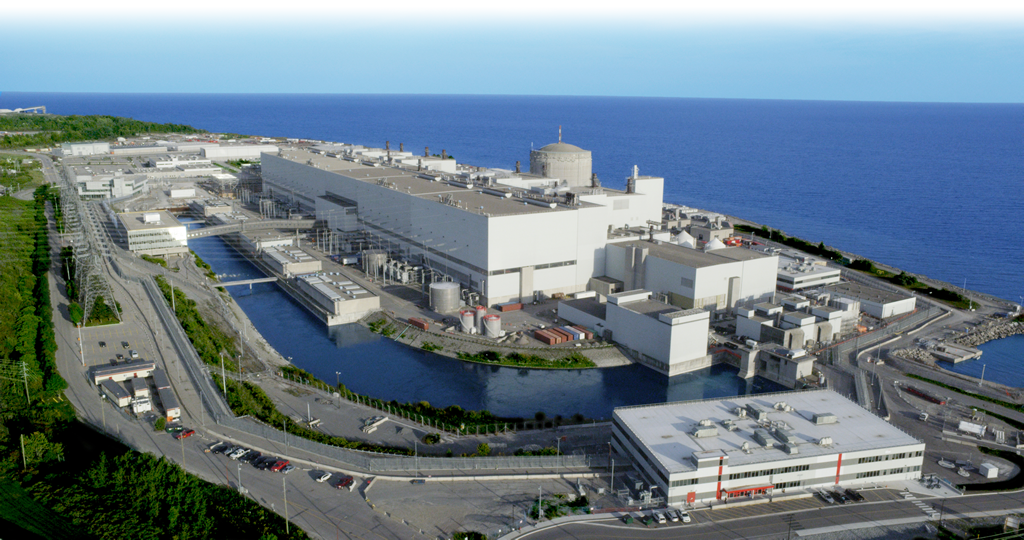
Supporting Ontario’s Reliable, Affordable and Clean Electricity Grid
Energy storage will support the operation of Ontario’s clean electricity grid by drawing and storing electricity off-peak when power demand is low and intermittent renewable generation is high, as well as returning the power to the system at times of higher electricity demand.
In October 2022, the government launched the largest clean energy storage procurement in Canada’s history. The procurement, which is contracting 2,500 MW of clean energy storage, will increase the efficiency of Ontario’s clean electricity grid. To date, Ontario has acquired a total of 880 MW of new storage supply, as announced in May and June 2023, with nine of the 15 previously announced storage projects having at least 50 per cent Indigenous ownership. These projects complement Ontario’s recent agreement for the 250 MW Oneida Energy Storage Facility in Haldimand County. When all are fully operational, scheduled for the end of 2026, Ontario will have Canada’s three largest battery projects, located in Hagersville (285 MW), Haldimand (250 MW) and Napanee (250 MW).
Helping Industry Through the Ontario Emissions Performance Standards Program
Ontario has created its own Emissions Performance Standards (EPS) program as an alternative to the federal Output-Based Pricing System (OBPS) on industrial emissions. On January 1, 2022, the Ontario EPS program took effect to regulate greenhouse gas emissions from large facilities. It is a more tailored program fit for Ontario’s environment and economy that helps the province achieve emission reductions from large emitters and achieve Ontario’s share of Canada’s 2030 emissions reduction targets. Between now and 2030, it will help save industry over $1 billion compared to the federal policy. Ontario is planning to return these funds in full to eligible industries through the EPS program.
Launching the Clean Energy Credit Registry and the Future Clean Electricity Fund
In March 2023, the government launched Ontario’s clean energy credit (CEC) registry. Proceeds from the sale of clean energy credits will be directed to Ontario’s Future Clean Electricity Fund. This fund will help keep costs down for electricity ratepayers by supporting the development of new clean energy projects as the province builds out the electricity grid to meet the demands of a growing population and economy, as well as the electrification of transportation and industry.
Supporting Local Ontario Businesses
Ontario’s businesses drive the economy and create good-paying jobs for workers in growing communities across the province. They are building the economy of tomorrow.
Since 2018, the government has saved businesses, not-for-profit organizations and the broader public sector an estimated $939 million in gross annual regulatory compliance costs by reducing red tape, without impacting public or workplace safety.
The government has also taken significant action to lower costs for businesses to help them compete, grow and weather today’s economic uncertainty. In 2023, the government is enabling an estimated $8.0 billion in cost savings and support for Ontario businesses, of which $3.6 billion would go to small businesses.
Modernizing Capital Markets
Ontario will continue to work closely with the Ontario Securities Commission (OSC) to foster more competitive capital markets, while ensuring investors remain protected. As capital markets continue to evolve and adapt to global economic volatility, the government remains focused on strengthening competition, which encourages innovation and capital formation while ensuring continued investor protection. Ontario continues to move forward with initiatives to support increased investment and economic activity and refine regulatory frameworks to support the people of Ontario investing for their future.
This is why the government is proposing to amend securities legislation to facilitate streamlined access to capital for well-known seasoned issuers in Ontario. The government is also working with the OSC to bring forward further modernization initiatives that facilitate greater early-stage financing of Ontario startups and small and medium-sized companies. It is also working with the OSC to enhance investor access to investment opportunities and support increased investment in capital-intensive assets, such as infrastructure, natural resource projects and other relatively less liquid assets, through a long-term investment or asset fund framework.
The government supports equitable access to capital markets and will work with the OSC to engage Indigenous communities and organizations to identify opportunities for enhanced Indigenous participation in capital markets.
Ontario is also seeking to enhance investor confidence by facilitating the use of automatic and streamlined reciprocal enforcement orders, strengthening the OSC whistleblower statutory framework and introducing a statutory process for the distribution of disgorged funds to harmed investors. The government, working with the OSC, is also strengthening Ontario’s short-selling framework to better align with other leading jurisdictions, and supports the OSC’s ongoing work to modernize the dispute resolution framework available to Ontario investors.
Reviewing Ontario’s Tax System
In the 2023 Budget, the government announced that it would be reviewing the province’s tax system to further its track record of supporting business, seniors and families. The review is prioritizing competitiveness, productivity and long‐term growth in the province, as well as the fairness and effectiveness of tax relief and supports. The review is also focused on modernizing Ontario’s tax administration tools.
Building on the objectives identified in the Budget and based on the initial discussions with policy economists and tax experts, several themes have emerged to guide the provincial tax review:
- Ensuring that the results of the tax review align with Ontario’s fiscal plan;
- Focusing on long-term economic growth and competitiveness by encouraging investments to support greater productivity, and by attracting and retaining top talent;
- Promoting fair treatment of taxpayers that supports their ability to make investment decisions and carry out reliable and predictable planning for savings and growth;
- Prioritizing simplicity and transparency to make the tax system clearer and more easily understood; and
- Modernizing the tax system by updating and streamlining existing tax measures.
In the coming months, the government will continue discussions with key sectors and further explore these themes. The Ontario government will provide another report on its progress with the 2024 Budget.
See section Consultations on Building a Strong Ontario Together for further details.
Building Highways, Transit and Infrastructure
As Ontario’s population grows, so does the need to build highways, roads, hospitals, schools, broadband and other infrastructure. The government is delivering on Ontario’s Plan to Build, the most ambitious capital plan in the province’s history, by getting shovels in the ground to better connect people to jobs, services, family and loved ones. Ontario is using every tool at its disposal to build this critical infrastructure smarter and faster.
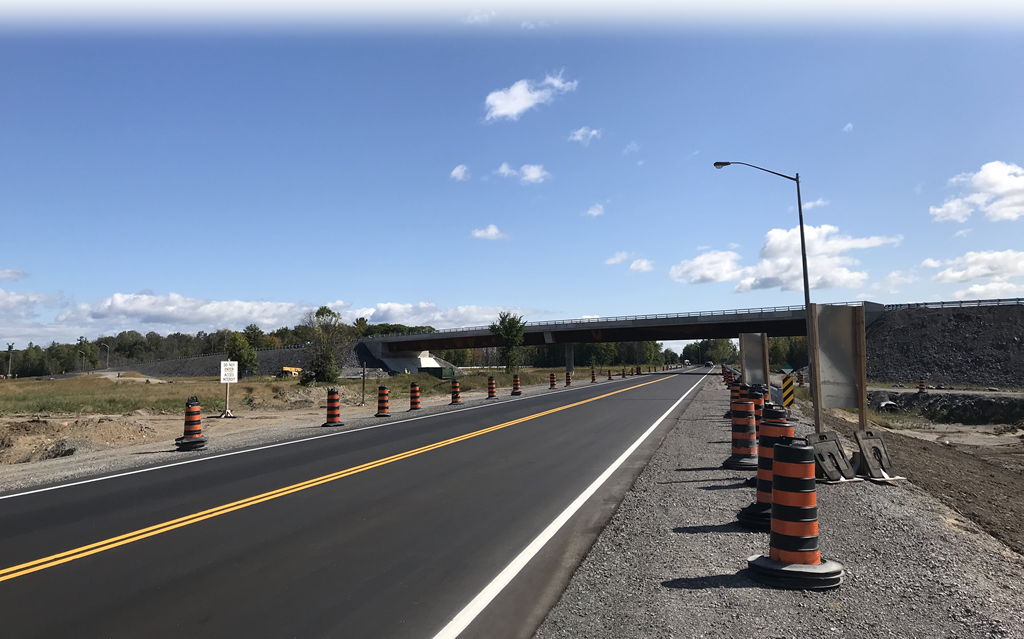
Partnering to Build More Infrastructure, Faster and Smarter
Ontario needs to build more infrastructure. The province’s population is growing, new jobs are being created, and global companies are choosing Ontario to set up shop amid the transformation in the global economy. This growth is good news. But it means the province’s existing infrastructure is under strain. It also means more needs to be built — including more housing and long-term care homes, as well as energy, municipal and transportation infrastructure.
Addressing this infrastructure deficit is not easy. Despite an ambitious capital plan totalling $185.0 billion over 10 years, Ontario must do more to keep up with demands. This challenge exists amid competing demands for government resources and global economic uncertainty.
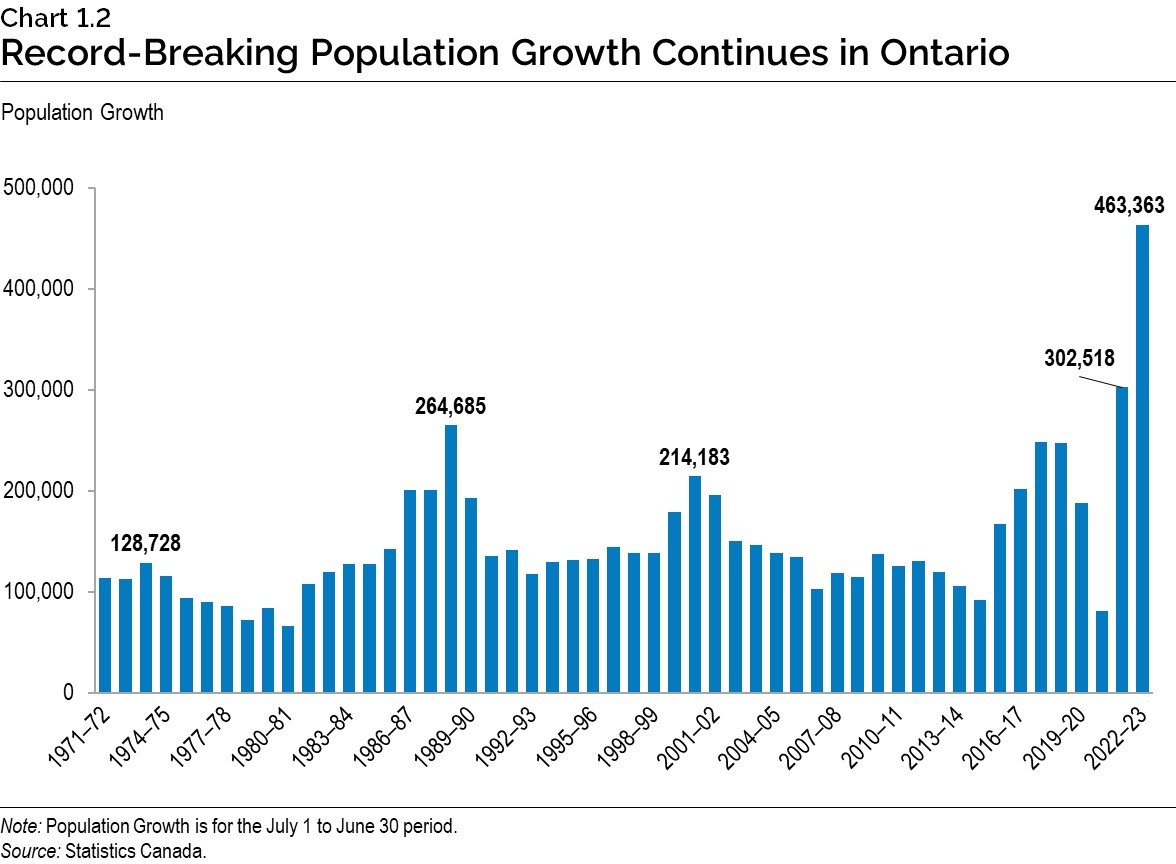
Building Capital — Launching the Ontario Infrastructure Bank
Ontario taxpayers cannot build the infrastructure that the province needs alone. As the government moves forward with Ontario’s Plan to Build, it is looking at new ways to attract trusted Canadian institutional investors to help build essential infrastructure that would not otherwise get built.
The Ontario Infrastructure Bank is a new, arms-length, board-governed agency that will enable public-sector pension plans and other trusted institutional investors to further participate in large‑scale infrastructure projects across the province. The government is proposing to provide $3 billion to the Ontario Infrastructure Bank in initial funding to support its ability to invest in critical infrastructure projects across the province. Institutional investor participation will help the government deliver more infrastructure faster, while leveraging additional capital from investors and helping to maintain a responsible fiscal plan for today and for future generations.
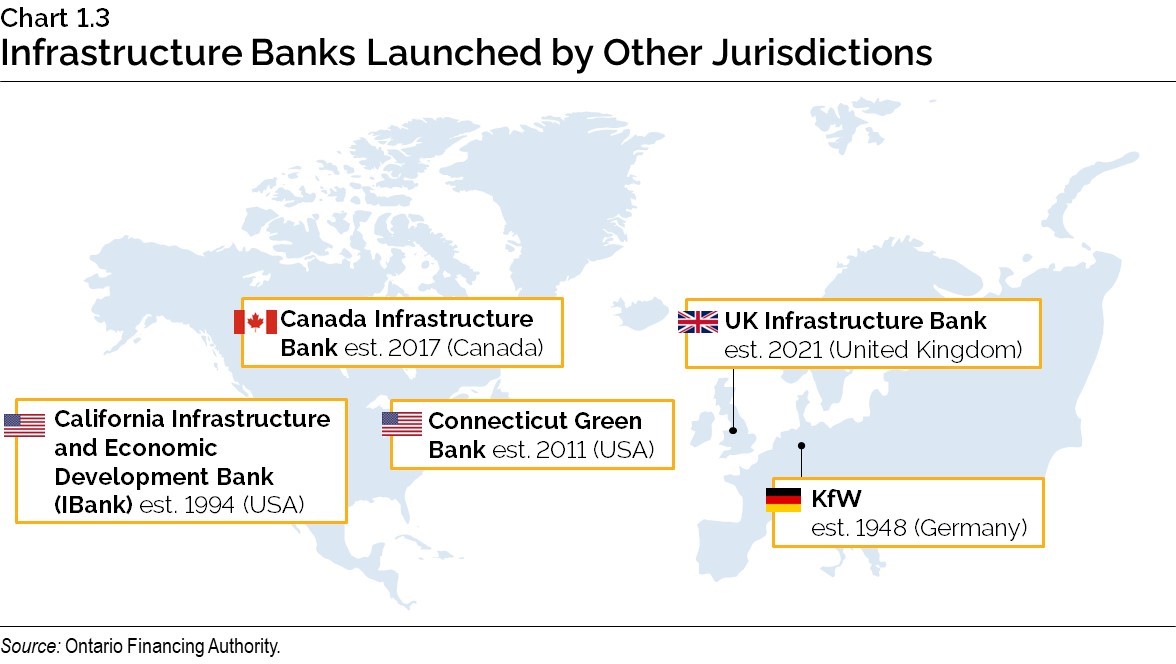
The Ontario Infrastructure Bank will develop a detailed process to ensure there is appropriate qualification and selection of projects and partners in priority areas based on financial and public benefit criteria.
Project investments made by the bank will initially be focused on new long‑term care homes, energy infrastructure, affordable housing, municipal and community infrastructure and transportation. The mandate includes support for infrastructure projects for Indigenous communities that advance community and economic well-being.

Launching a New Housing–Enabling Water Systems Fund
Having strong water infrastructure in place is critical to enable the building of new housing.
This is why the government will invest $200 million over three years in a new Housing-Enabling Water Systems Fund as another step in protecting communities and helping to unlock new housing opportunities. Eligible municipalities will be able to apply for funding for the repair, rehabilitation and expansion of core water, wastewater and stormwater projects that promote growth and enable housing development. In addition, the government will also explore options to provide improved flexibility and borrowing terms for municipalities to access necessary capital under Infrastructure Ontario’s Loan Program.
The Housing-Enabling Water Systems Fund complements the recently announced Building Faster Fund, a new three-year $1.2 billion fund that supports municipalities in achieving their housing targets, including housing-enabling infrastructure and other related costs that support community growth.
Ontario continues to call on the federal government for a next generation infrastructure program that provides adequate funding in the face of rising costs and provides flexibility for provinces to address critical infrastructure needs. The government is also asking the federal government to provide funding to support this new water systems fund.
Ontario will continue to work with municipalities to build infrastructure, achieve housing targets and strengthen communities.
Supporting Innovation in Procurement Delivery
Ontario is building infrastructure now to support the future growth of the province. The government continues to advance major infrastructure projects across the province using public‑private partnership delivery models. The Ontario government is also employing innovative approaches such as progressive models to provide more collaborative project planning and consultation. To adapt to the changes in the construction sector and market, the government continues to work with key stakeholders to identify solutions, such as staging major infrastructure projects that are in line with market capacity to build the province’s assets including highways, public transit and hospitals.
Modernizing Surety Bonds
As part of Ontario’s Plan to Build, the government is proposing amendments to the Construction Act to introduce regulation-making authority to allow for lower minimum bonding requirements, a type of financial security, for large public infrastructure projects that do not involve private financing. This is expected to help attract more contractors to bid on capital projects, foster and diversify market competition, and save taxpayers money.
The proposed legislative measures would support the government’s priority of building highways, transit and other infrastructure projects.
Building Highways
Gridlock on highways and roads costs the economy more than $11 billion1 a year in productivity, including time lost by commuters and drivers, higher costs of doing business and reduced access to jobs and housing.
The Ontario government is continuing to execute its plan to deliver effective and resilient infrastructure that is built not just for today, but for future generations.
Moving Forward With Highway 413
By 2051, the number of people calling the Greater Golden Horseshoe home is expected to increase by five million and two million more people will be working in this fast-growing region. There is a pressing need for new highways to prepare for this growth and alleviate gridlock in what is already one of the busiest corridors in North America.
Ontario continues to move ahead with building Highway 413, a proposed new 52-kilometre (km) 400-series highway to better connect the corridor across Halton, Peel and York Regions. Preliminary design, surveying, field work, rigorous environmental assessment work and consultations are underway for the new route.
During construction, Highway 413 is expected to support up to 3,500 jobs each year and generate up to $350 million in annual real GDP.
Once completed, Highway 413 will save drivers up to 30 minutes each way on their commute during rush hour and keep goods and the economy moving.
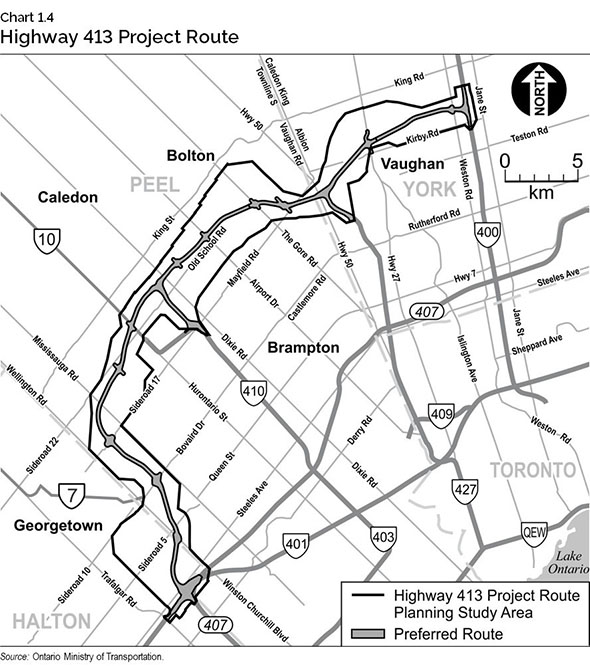
Getting the Bradford Bypass Built
Ontario is helping prepare York Region and Simcoe County for rapid population growth in the next 10 years by building the Bradford Bypass, a new four-lane highway to connect Highways 400 and 404.
In 2022, an Early Works contract was awarded to build a new bridge at Simcoe County Road 4. Work started in fall 2022, including utility relocations. In 2023, construction began on the new bridge.
By the end of 2023, the government will initiate a new procurement for further pre-construction activities to advance the development of the Bradford Bypass. The government also plans to initiate another procurement in early 2024 for the bridge replacement and interchange reconstruction of the Highway 400/Simcoe County Road 88 interchange, which will enable the future Bradford Bypass connection with Highway 400.
Once complete, the Bradford Bypass will save drivers an estimated 35 minutes in travel time and is expected to create an estimated 2,640 jobs per year, on average, during construction as well as generate an estimated $274 million in annual GDP.

Expanding Highway 401
The Highway 401 corridor in Eastern Ontario is an important economic link between Ontario, Eastern Canada and the United States. It carries about 10,000 trucks with commodities valued at up to $380 million per day. The government is continuing work to widen Highway 401 easterly from Brock Road in Pickering, as well as replacing bridges in Port Hope, helping tens of thousands of drivers per day get to work and home faster, as well as to get goods to market sooner.
Twinning the Queen Elizabeth Way Garden City Skyway
Ontario is moving forward with the Queen Elizabeth Way (QEW) Garden City Skyway Bridge Twinning project, which includes construction of a new twin bridge on the QEW over the Welland Canal connecting the City of St. Catharines to the Town of Niagara-on-the-Lake. This section of the highway supports the province’s supply chain by linking the international border crossings at Niagara Falls and Fort Erie with the Greater Golden Horseshoe.
Building the New Highway 7
The next phase of construction for the new Highway 7 between Kitchener and Guelph will provide relief to the gridlocked Highway 401 and connect the fast-growing urban centres of Kitchener, Waterloo and Guelph.
The government is advancing the project with activities that include replacement of the Frederick Street bridge in Kitchener, environmental field work, and other engineering work to support construction on the remainder of the corridor.
Investing in Highways in Southwestern Ontario
The government is continuing to improve road safety and keeping people and goods moving in Southwestern Ontario by awarding the contract to design, build and finance the widening of Highway 3 between Essex and Leamington.
The government is also initiating a procurement for an Environmental Assessment and the design of a new interchange connecting Highway 401 to Lauzon Parkway.
Advancing these critical transportation projects will increase economic growth and trade opportunities across Ontario’s borders.
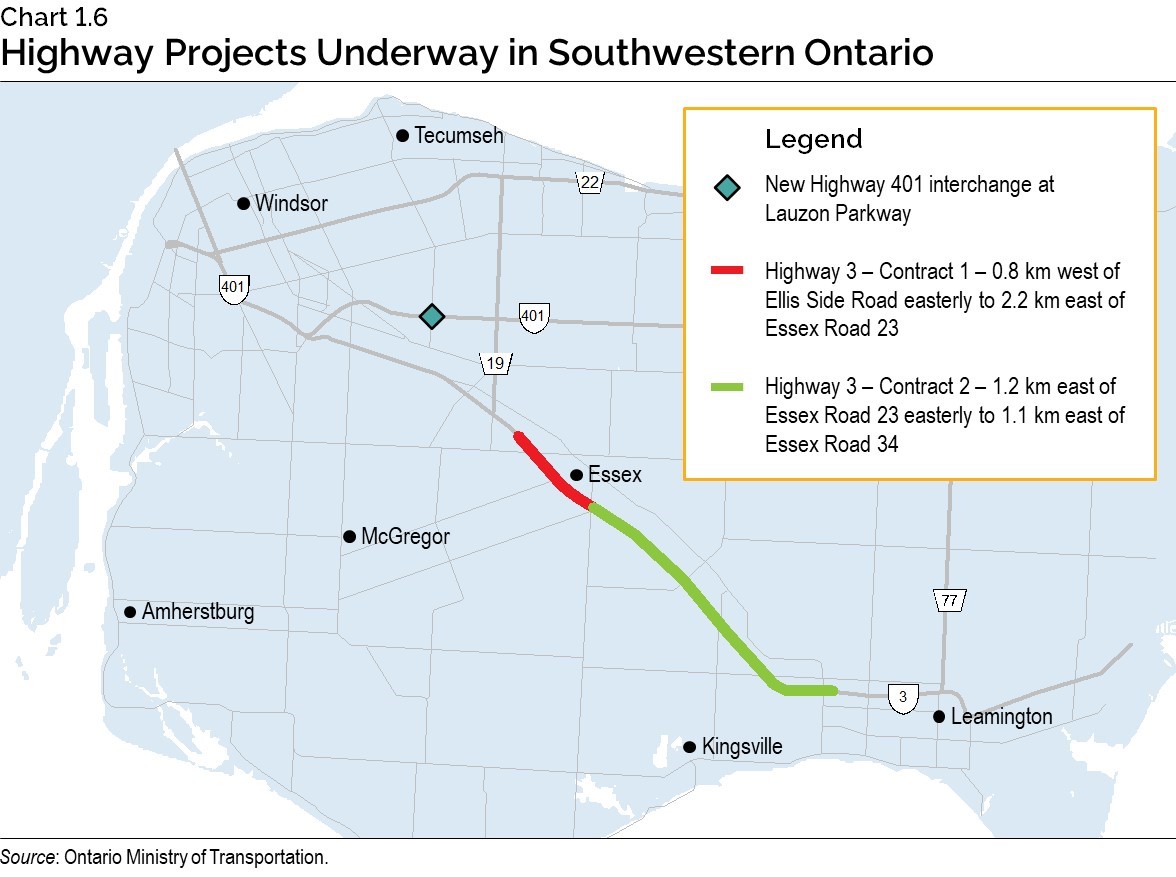
Building Highways for Northern Ontario
The government is investing in highways in the North to improve road safety and unlock economic opportunities. Projects include:
- The replacement of the Little Current Swing Bridge on Highway 6 in the Town of Northeastern Manitoulin and the Islands. The planning, preliminary design and Environmental Assessment have been completed and the project is proceeding with the next steps – property acquisition, right-of-way designation and detail design.
- Building the first ever 2+1 highway in North America on Highway 11 north of North Bay. In July 2023, a contract was awarded to begin assessment and design work.
- Expanded Highway 11/17 from Ouimet to Dorion East Loop in the Thunder Bay District. The nine kilometres of new lanes are part of a larger series of projects to widen 100 kilometres of the highway between Thunder Bay and Nipigon.
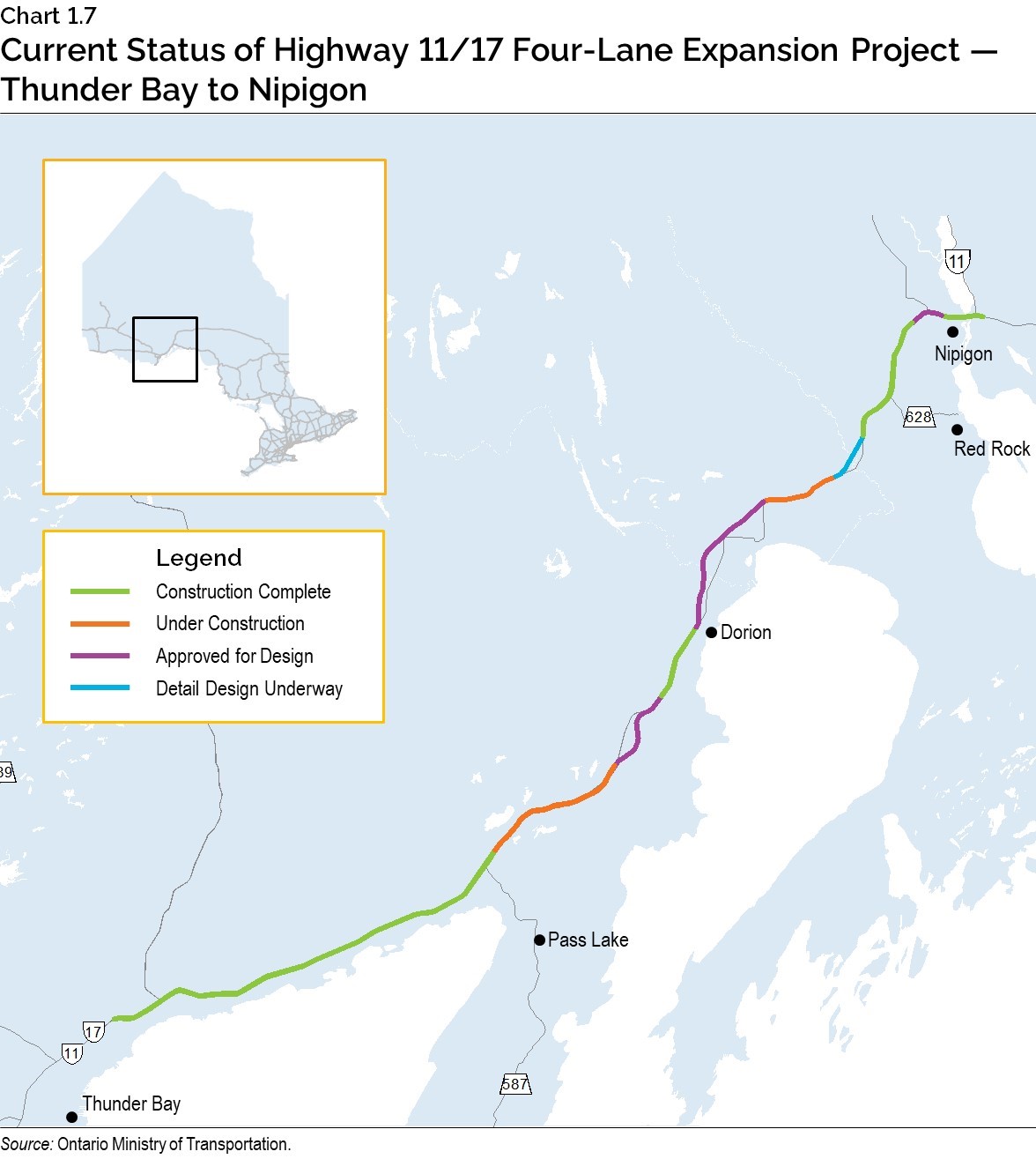
Expanding and Improving Roads, Highways and Bridges Across Ontario
The government is investing $28.1 billion over the next 10 years to connect communities, fight gridlock and keep goods and people moving across the province. The Ontario Highways Program includes more than 650 expansion and rehabilitation projects that are either underway or planned over the next four years. In 2023–24 alone, Ontario is investing $3.2 billion towards projects that will expand and repair provincial highways and bridges.
The government is building capacity and enhancing road safety for travellers by:
- Widening Highway 17 from Kenora to the Manitoba border;
- Widening Highway 11/17 from two to four lanes between Thunder Bay and Nipigon for 14.4 km starting east of Highway 587; and
- Completing work to replace 11 bridges in five locations along Highway 417 in Ottawa. This work includes the rapid replacement of both eastbound and westbound bridges from Island Park Drive to Kent Street.
Table 1.1
Recently Completed Highway Projects
Northern
- Highway 17 west of White River: Replaced the White River Bridge at Bremner.
- Highway 11 in Greenstone: Resurfacing work 25 km north of Highway 17, northerly.
- Highway 17 and Highway 638 east of Bruce Mines*: Resurfacing, bridge rehabilitation and culvert replacement east of Bruce Mines.
Eastern
- Highway 417 east of Ottawa*: Reconstruction and improvements between Casselman and Highway 138.
- Highway 7/115 in Peterborough*: Rehabilitation of seven bridges between Airport Road and Lansdowne Street.
- Highway 62 in Hastings*: Rehabilitation of the Keller River Bridge.
Southwestern
- Highway 401 in London: Pavement resurfacing 3.7 km west of Highway 4 (Colonel Talbot Road) to Highway 402.
- Highway 3 in Essex County*: Widening from Ellis Side Road to Essex Road 23, Windsor to Leamington.
- Highway 401 in Cambridge*: Widening from Waterloo Regional Road 24 (Hespeler Road) to Waterloo Regional Road 33 (Townline Road).
Central
- Highway 400 and Highway 89 interchange: Reconstruction and bridge replacement in Simcoe.
- QEW and Dixie Road interchange phase 1, from Etobicoke Creek to The East Mall: Bridge replacements in Mississauga.
- Highway 427 Expansion Project: Extended the highway 6.6 km, from Highway 7 to Major Mackenzie Drive and widened the existing highway to eight lanes between Finch Avenue and Highway 7.
*Substantially completed projects that are open to motorists with minor finishing work underway.
Source: Ontario Ministry of Transportation.
Building Transit
Delivering on Ontario’s Plan to Build with public transit projects is vital to supporting the province’s economy, alleviating gridlock, and connecting more people to jobs and housing.
Building Transit-Oriented Communities
The population in the Greater Golden Horseshoe is projected to grow from 10 million to nearly 15 million people by 2051. To keep people connected to jobs, services and their communities, part of Ontario’s plan is to build at least 1.5 million homes by 2031, including building mixed‐use communities at or around transit stations. Transit‐Oriented Communities will help increase transit ridership, create sustainable communities and build more homes, including affordable and attainable housing around GO Transit, light rail transit (LRT) and subways. Work is already underway to deliver on the Transit‐Oriented Communities at eight future stations along the new Ontario Line and Yonge North Subway Extension, creating over 77,000 new jobs and approximately 48,000 new residential units.
In September 2023, the government introduced Bill 131, the Transportation for the Future Act, 2023, which, if passed, will provide a new, voluntary funding tool for municipalities. This tool could be used by municipalities to fund the design and construction of new GO stations and recoup costs over time as new development occurs around them, encouraging new housing and mixed-used communities.
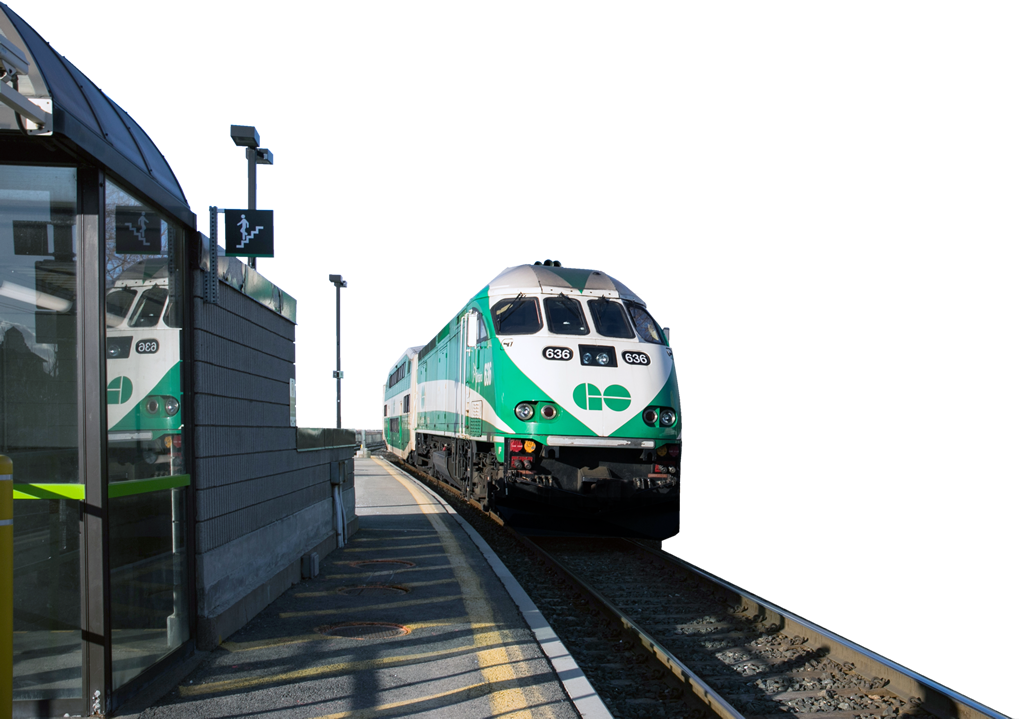
Building Strong and Connected GO Transit Services
To better connect growing communities across the Greater Golden Horseshoe and Southwestern Ontario, the government is continuing to expand and build better GO rail and GO bus services to make it easier and faster for people to get where they need to. Ontario continues to invest in service improvements across the core network to bring two-way, all-day GO Transit service with faster trains, more stations and better connections.
- Bowmanville GO Rail Extension: The government has awarded a contract to advance the planning to extend GO rail service east of Oshawa into Bowmanville, which includes new tracks and signals, seven new bridges and at-grade crossing upgrades.
- Bramalea GO Station: The brand-new accessible station, parking garage, and bus loop will provide better access to GO Transit and Brampton Transit services. These improvements at the Bramalea GO Station will support future two-way, all-day GO train service along the Kitchener line and connect more people to transit, jobs and housing across the Greater Golden Horseshoe.
- Niagara GO Rail Extension: In May 2023, the government increased GO train service between Union Station and the Niagara Region, with more express service between Hamilton, Burlington and Toronto.
- Aurora GO Station: The government is making critical infrastructure upgrades to the Aurora GO Station, which will provide commuters with better service, more transit connections and future two-way, all-day service between Aurora GO Station and Union Station in Toronto. These improvements include a new second platform and track, a new pedestrian tunnel with elevators, additional parking spaces as well as rail signal upgrades.
- Stouffville GO Line: The government has completed major infrastructure improvements at Milliken and Agincourt GO stations along the Stouffville Line, which will increase safety and accessibility for customers, while supporting future two-way, all-day train service between Toronto and Markham.
- Kitchener GO Rail Extension: Following its contract award in May 2022, Metrolinx has begun work on the Guelph Central GO Station to construct a second platform, a new storage track for maintenance vehicles and a passing track in the community of Breslau to allow trains moving in opposite directions to pass each other. Metrolinx has begun work on a new fourth track between Lansdowne Avenue and Dupont Street and to realign the West Toronto Railpath, which will facilitate the new track to be installed and allow for more trains to be added to the Kitchener Line.
- Milton GO Rail Expansion: In May 2022, the new Kipling Transit Hub was completed. This new transit hub connects customers to GO Transit; MiWay (Mississauga Transit); TTC subway; buses, and parking — it also includes improved access for pedestrians and those entering the station by way of car and bicycle.
Building Subways
Work is underway on all four of Ontario’s priority subway projects. The government is closer to providing better travel options, alleviating gridlock on the roads and creating thousands of good, local jobs.
The combined subway projects will support more than 16,000 jobs annually during construction over the next decade. Shovels are in the ground and recent milestones include:
- Ontario Line: The government received responses to its Requests for Proposals (RFPs) for the Pape Tunnel and Underground Stations and the Elevated Guideway and Stations contracts. Metrolinx and Infrastructure Ontario will enter into a development phase with the preferred proponent for each contract in 2024. Work is also underway in the Lakeshore East rail corridor, bringing transit upgrades including new rail bridges, retaining walls and noise walls to neighbourhoods surrounding the future sites of East Harbour, Riverside-Leslieville and Gerrard Stations.
- Scarborough Subway Extension: In November 2022, the government selected a development partner for the Stations, Rail and Systems Contract. This contract includes design and construction of three new underground stations and bus terminals at each station, and the current Development Phase is scheduled to end in 2024.
- Yonge North Subway Extension: In April 2023, the government issued a Request for Qualifications (RFQ) for the Advance Tunnel Contract for the Yonge North Subway Extension, which includes constructing the tunnels and building the launch and extraction shafts used for the tunnel boring machines. Upgrades at Finch Station, which will include improvements made to the electrical system that powers the rails, are underway.
- Eglinton Crosstown West Extension: Tunnelling on the project has commenced. As of September 2023, the two boring machines have tunnelled more than halfway, at a combined 8.2 kilometres.
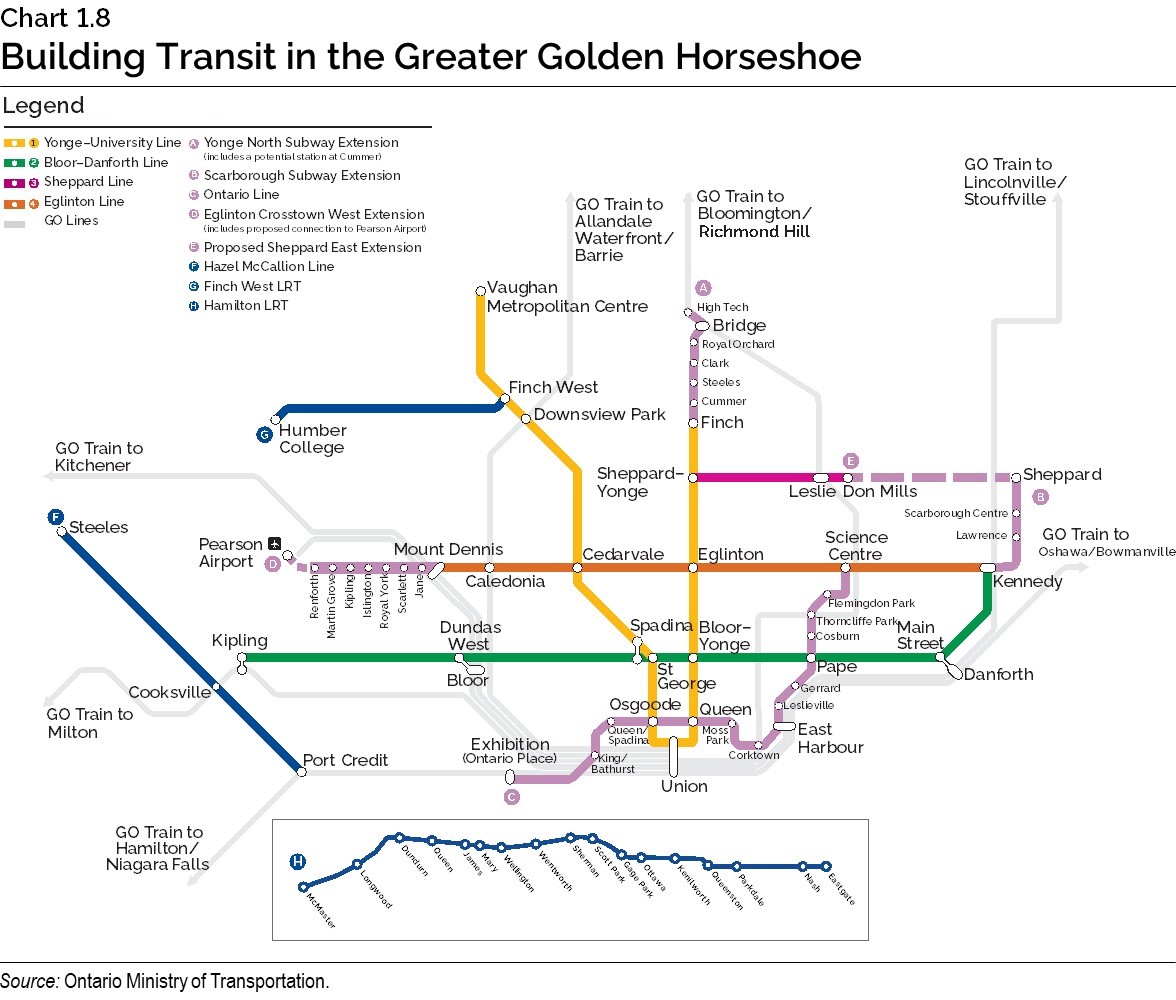
Bringing Back the Northlander
Ontario is delivering on its promise to restore passenger rail service in Northern Ontario. The reinstated Northlander train will support industries, resource sectors, and provide a safe and reliable transportation option for Northern communities, especially in the winter months.
The government is investing $139.5 million for three new trains that will bring back passenger rail service between Timmins and Toronto.
The new trainsets will be built by Siemens Mobility Limited and will include built-in wheelchair lifts, mobility aid storage spaces and fully accessible washrooms. The train interiors will also feature spacious seating and modern amenities, including Wi-Fi connectivity. Once reinstated, the Northlander train will ensure access to essential services like health care and education, while supporting economic prosperity and tourism in the region as well as strengthening the connection between the North and the South.
Investing in Indigenous Transportation Initiatives
The Ontario government is continuing to support community-driven transportation-related projects for Indigenous peoples in urban, rural and reserve settings across Ontario. In 2023, the government is providing up to $584,000 to nine Indigenous organizations and communities to help support economic development, mobility and transportation safety.
Table 1.2
2023–24 Indigenous Transportation Initiatives
Communities
- Kijicho Manito Madaouskarini Algonquin First Nation (Bancroft): A community well-being strategy designed to promote recreation, economic prosperity, cultural tourism, and healthier, safer living for all people.
- Apitipi Anicinapek Nation (formerly Wahgoshig First Nation) (Matheson): Open existing trails and widen the road to provide safe access to the north end of the community where members have built cabins and need access.
- Kitchenuhmaykoosib Inninuwug First Nation (Big Trout Lake): Transportation services to help children and youth access supports provided by the Choose Life programs and Jordan’s Principle.
- Red Rock First Nation (Nipigon): Shuttle bus service that will increase mobility and access for low‑income and vulnerable community members.
- Kawartha Nishnawbe First Nation (Trent Lakes): Building of a school bus shelter for children.
Organizations
- Seven Generations Education Institute (Kenora): Safe and reliable transportation for students to support them in attending classes, travelling between campuses, participating in land-based learning and cultural events, and completing work placement opportunities.
- Oshki-Pimache-O-Win: The Wenjack Education Institute (Fort William First Nation): A fuel handling truck driver safety program for First Nation communities to increase the number of licensed DZ truck drivers.
- Tewegan Housing for Aboriginal Youth (Ottawa): Increase awareness of, and access to, transportation options for Indigenous young women moving to Ottawa, as well as map transit and inter-communal transportation with Inuit, First Nations, and Métis women and their families.
- Temiskaming Native Women’s Support Group (Temiskaming Shores): Vehicle purchases to transport community members both on- and off-reserve to access programs and services including health care, land-based and cultural activities, family support programs and employment training programs.
Source: Ontario Ministry of Transportation.
Building Community Infrastructure and Expanding High-Speed Internet Access
Expanding High-Speed Internet Access
Access to high-speed internet is essential for the growth and prosperity of communities across Ontario. High-speed internet will improve access to health services, help people work and learn online, start a business, participate in the agricultural sector and connect with their loved ones.
The government is investing nearly $4 billion to ensure every community across the province has access to high-speed internet by the end of 2025. Multiple broadband programs and initiatives are being used to meet this goal, including:
- Completed an innovative competitive bidding process that quickly and cost‐effectively identified service providers for unserved and underserved areas in Ontario. Agreements have been completed with eight successful Internet Service Providers (ISPs) that represent a diverse selection of local, regional and national carriers, helping with market competition and consumer choice.
- Investing more than $63 million in the Southwestern Integrated Fibre Technology (SWIFT) project. To date, 84 of 97 SWIFT projects have been completed, bringing high‐speed internet access to approximately 64,000 homes and businesses across Southwestern Ontario.
- Investing $71 million in the Eastern Ontario Regional Network (EORN) to improve access to cellular service. This project is expected to generate as many as 3,000 jobs over 10 years and provide greater choice to residents and businesses.
- Improving connectivity in Northern Ontario, including $10.9 million to bring improved internet access to several towns and First Nation communities across Northern Ontario.
Ontario launched a new interactive online map that shows where provincially funded high-speed internet projects are planned, are currently under way or have been recently completed.
Building Hospitals
The government is building a convenient and connected health care system that puts people first. This is why Ontario is delivering on the most ambitious plan for hospital expansion in the province’s history. Ontario’s plan will lead to investments of over $48 billion over the next 10 years in health infrastructure, including over $32 billion in capital grants. This includes supporting more than 50 hospital projects that would add 3,000 new beds over 10 years to improve access to reliable, quality care. Recent milestones include:
- Brightshores Health System – Markdale Hospital: In September 2023, this new hospital opened, providing people in the community with access to a new emergency room and convenient care in a modern facility.
- Niagara Health System – New South Niagara Hospital Capital Project: Construction began in summer 2023 on a new South Niagara Hospital that will include 156 net new beds.
- Brant Community Healthcare System – Emergency Department Redevelopment Project:
In July 2023, the government supported the hospital in the award of a construction contract. This project will involve major renovations of the emergency department to address community growth. - Carleton Place & District Memorial Hospital – Emergency Department Redevelopment Project: Work is underway to build a stand-alone emergency department to shorten wait times and improve access to care. The project is expected to be complete in late spring 2024.
- Sault Area Hospital: This project includes the addition of a new program to support cardiac procedures to connect people in Sault Ste. Marie and Northern Ontario to this critical care. The project is expected to be complete in December 2023.
- Southwest Ontario Aboriginal Health Access Centre: The recently completed Southwest Ontario Aboriginal Health Access Centre project has created newly renovated, culturally sensitive space in London for services such as: primary care, traditional healing, nutrition and healthy lifestyles, diabetes education and prevention, mental health/crisis counselling, aging at home, maternal child health and midwifery.
- North of Superior Healthcare Group – Wilson Memorial General Hospital Site: A new long-term care addition at the Wilson Memorial General Hospital Site will add 14 new long-term care beds and renovate shared accommodation spaces for complex continuing care beds to four single-occupancy rooms. These new and renovated beds are scheduled to be complete in summer 2025.
Building Long-Term Care Beds
Ontario continues to make progress on its plan to build modern, safe and comfortable long-term care homes for seniors and residents. Through planned investments that total a historic $6.4 billion since 2019, Ontario is making progress to build more than 30,000 new and over 28,000 upgraded beds across the province by 2028.
Since the 2023 Budget, the following long-term care homes have been completed and opened to new residents:
- Southbridge Cornwall opened in April 2023 with 95 new long-term care beds and 65 upgraded long-term care beds in Cornwall;
- Stoneridge Manor opened in May 2023 with 68 new long-term care beds and 60 upgraded long-term care beds in Carleton Place;
- Humber Meadows Long-Term Care Home opened in June 2023 with 320 new long-term care beds in North York; and
- Ritz Lutheran/West Perth Village opened in October 2023 with 128 upgraded long-term care beds in Mitchell.
Progress in building long-term care homes continues in Mississauga under the Accelerated Build Pilot Program. Wellbrook Place (Trillium Health Partners) is expected to open to residents in fall 2023, adding a total of 632 beds to the long-term care sector. Two long-term care homes have been completed and opened which include Lakeridge Gardens, located next to Lakeridge Health’s Ajax Pickering Hospital which opened 320 beds to residents in March 2022; and Humber Meadows Long‑Term Care Home (Humber River Hospital), which opened 320 beds to residents in June 2023.
Building Schools and Child Care Spaces
Making schools in Ontario modern, safe and accessible is key to helping students learn and develop. To support student success, the government is investing $22 billion over the next 10 years, including close to $15 billion in capital grants, to build new schools, add child care spaces and modernize school infrastructure. This includes $1.4 billion for the current school year to support the repair and renewal needs of schools.
For the 2023–24 school year, 21 new schools and additions have opened, creating over 7,000 new student spaces, including six French-language school projects.

Table 1.3
School Projects Opening for the 2023–24 School Year
Northern
- Maple View Public School in North Bay which serves 308 students and includes 73 licensed child care spaces.
- Lasalle Elementary School in Sudbury which serves 387 students and includes 49 licensed child care spaces.
- École publique de Thunder Bay in Thunder Bay which serves 257 French-language students.
Eastern
- École élémentaire catholique des Deux-Rivières in Arnprior which serves 248 French-language students and includes 49 licensed child care spaces.
- An addition to Westminster Public School in Brockville with 25 more licensed child care spaces.
- An addition to St. Joseph Catholic Elementary School in Douro-Dummer with 92 more student spaces.
- École secondaire publique Mille-Îles and École secondaire catholique Sainte-Marie-Rivier joint school in Kingston which serves 600 French-language students and includes 49 licensed child care spaces.
- St. Bernadette School in Stittsville which serves 507 students and includes 39 licensed child care spaces.
- An addition to Williamstown Public School in Williamstown with 121 more student spaces.
Southwestern
- An addition to Peace Bridge Public School in Fort Erie with 121 more student spaces.
- An addition to St. Anthony’s Catholic School in Kincardine with 190 more student spaces and 78 more licensed child care spaces.
- St. Josephine Bakhita Catholic Elementary School in Kitchener which serves 650 students and includes 88 licensed child care spaces.
- West Niagara Secondary School in Lincoln which serves 1,533 students.
- An addition to Hyland Heights Elementary School in Shelburne with 92 more student spaces.
- Eastview Horizon Public School in Windsor which serves 501 students and includes 73 licensed child care spaces.
Central
- An addition to École secondaire Jeunes sans frontières in Brampton with 207 more French-language student spaces.
- E.J. Sand Public School in Markham which serves 409 students and includes 39 licensed child care spaces.
- Glen Orchard Public School retrofit in Port Carling which includes 54 licensed child care spaces.
- École secondaire Michelle-O’Bonsawin retrofit in Toronto which serves 501 French-language students.
- An addition to Terry Fox Public School in Toronto with 276 more student spaces and 88 more licensed child care spaces.
Source: Ontario Ministry of Education.
Table 1.4
Continuing To Get Shovels in the Ground To Build More Schools
Northern
- An addition to St. Mary School in Fort Frances which will add 69 student spaces.
- A new English public elementary and secondary school in Rainy River which will serve 311 students and include 39 licensed child care spaces.
- An addition to Tarentorus Public School in Sault Ste. Marie which will add 92 student spaces and 49 licensed child care spaces.
- A new French Catholic elementary school in Val Thérèse which will serve 567 French-language students and include 73 licensed child care spaces.
Eastern
- A new French public elementary school in Barrhaven which will serve 475 students and include 49 licensed child care spaces.
- An addition at St. Joseph Catholic School in Belleville which will add 334 student spaces and 49 licensed child care spaces.
- A new English public elementary school in Brockville which will serve 500 students and include 64 licensed child care spaces.
- A new English public secondary school in Ottawa which will serve 1,353 students.
Southwestern
- A new English public elementary and secondary school in Kingsville which will serve 1,798 students and include 98 licensed child care spaces.
- An addition to St. Louis Catholic School in Leamington which will add 147 student spaces and include 63 licensed child care spaces.
- An addition to Listowel Eastdale Public School in Listowel which will add 98 student spaces and 49 licensed child care spaces.
- A new English Catholic elementary school in Sarnia which will serve 659 students and include 88 licensed child care spaces.
Central
- A new English public elementary school in Brampton which will serve 850 students and include 73 licensed child care spaces.
- A new English public elementary school in East Gwillimbury which will serve 638 students and include 39 licensed child care spaces.
- A new Catholic elementary school in Milton which will serve 671 students and include 88 licensed child care spaces.
- A new English public elementary school in Oshawa, which will serve 536 students and include 73 licensed child care spaces.
- A new English public secondary school in Toronto which will serve 922 students.
- A new French Catholic secondary school in Vaughan which will serve 407 students and include 49 licensed child care spaces.
Source: Ontario Ministry of Education.
Building Ontario Place
The redevelopment of Ontario Place is expected to create up to 5,000 construction and operations jobs and attract four to six million visitors annually. The province recently updated its development application to the City of Toronto to include:
- Approximately 50 acres of free parks, public and green spaces for everyone to enjoy;
- A new, modernized Ontario Science Centre to be integrated with the preserved and upgraded Cinesphere and POD complex;
- Additional waterfront programming, activity and play zones, and Indigenous elements and features throughout the site, as well as proposed Indigenous educational and programming opportunities;
- Public parking that will serve visitors across the site; and
- Improved mobility options such as upgrades to pedestrian bridges over Lake Shore Boulevard.
The redevelopment also includes plans to build a new marina with opportunities for waterside cafes, year-round restaurants and entertainment. Select marina industry experts will be engaged to gather input on how the marina can be modernized and better support visitors throughout the year.
The government is bringing Ontario Place back to life and exploring opportunities to include more food and beverage options around the new site.
While progress continues to repair the exteriors of the Cinesphere and PODs, construction also began in fall 2023 to upgrade and replace the site’s existing infrastructure such as water, electrical and gas services that have not been updated in 50 years, so that new infrastructure meets current standards and codes.
Investing in the Ontario Community Infrastructure Fund
The Ontario Community Infrastructure Fund (OCIF) continues to build community infrastructure and provides investments in asset management planning for 425 small, rural and Northern communities across the province. The government doubled its annual investment to nearly $2 billion over five years beginning in 2021–22 to help repair community infrastructure, such as roads, bridges, water and wastewater infrastructure.
Table 1.5
Supporting Communities Through Projects Under the Ontario Community Infrastructure Fund
Northern
- Replacement of a storm sewer, asphalt rehabilitation and a culvert replacement along Highway 17 in the City of Dryden.
- Replacement of the Mercury Avenue culvert in the Town of Atikokan to address aging infrastructure.
Eastern
- Replacement of two watermains, sanitary sewers and storm sewers in the Town of Picton as part of the reconstruction of the town’s Main Street.
- Rehabilitation of the Drummond Street Bridge in the Town of Perth including new asphalt, handrails and sidewalks.
Southwestern
- Reconstruction and streetscaping of 400 metres of road through the downtown of the Town of South Bruce Peninsula. Work includes improved utilities, asphalt road and parking improvements.
- Replacement of 190 metres of watermain including road asphalt rehabilitation, storm sewer improvements and new sidewalks along Brien Avenue West in the Town of Essex.
Central
- Rehabilitation of municipal roads in the Town of Aurora including improvements to pavement, curbs and sidewalks.
- Conversion of the Huntsville Mountview Wastewater Treatment Plant to a large sewage pump station connected to the Huntsville Golden Pheasant Wastewater Treatment Plant as part of the wastewater improvements in the District Municipality of Muskoka.
Source: Ontario Ministry of Education.
Footnotes
[1] Benjamin Dachis, C.D. Howe Institute, “Cars, Congestion and Costs: A New Approach to Evaluating Government Infrastructure Investment,” (July 2013).
Chart Descriptions
Chart 1.1: Attracting More than $26 billion in Automotive, Electric Vehicle Battery Supply Chain and Clean Steel Investments to Ontario
The chart depicts major investments from global automakers, parts suppliers, and electric vehicle battery cell and material manufacturing plants that the province has attracted over the past three years. These investments will help strengthen Ontario's position as a global leader across the electric vehicle supply chain.
The chart depicts investments in vehicle assembly plants, battery and battery component manufacturing plants, electric vehicle component manufacturing plants and steel manufacturing plants in Ontario. The investments in vehicle assembly plants include: $3.6 billion shared across Stellantis’ facilities in Windsor and Brampton; $2.2 billion shared across General Motors’ facilities in Ingersoll and Oshawa; $1.8 billion in Ford’s Oakville Assembly Complex; and $1.4 billion in Honda’s plant in Alliston. The investments in battery and battery component manufacturing plants include: $7.0 billion in the PowerCo SE (Volkswagen) battery cell manufacturing plant in St. Thomas, $5.0 billion in the NextStar Energy (LG Energy Solution–Stellantis) battery manufacturing plant in Windsor and $1.5 billion in Umicore’s cathode and precursor materials manufacturing plant in Loyalist Township. The investment in the EV component plant includes $471 million in Magna’s electric vehicle battery enclosure facility in Brampton. The investments in steel manufacturing plants include: $1.8 billion in ArcelorMittal Dofasco’s steel manufacturing plant in Hamilton and $700 million in Algoma Steel’s steel manufacturing plant in Sault Ste. Marie.
Source: Ministry of Economic Development, Job Creation, and Trade.
Chart 1.2: Record-Breaking Population Growth Continues in Ontario
The bar chart shows Ontario’s annual population growth from 1971 to 2023. The annual period shown is for July 1 to June 30. The chart shows strong population growth of 302,518 for 2021–22 and 463,363 for 2022–23, the highest growth on record. Historically, population growth was 114,090 in 1971–72 and generally declined to a relative low of 66,273 in 1980–81. It then climbed to a relative peak of 264,685 in 1988–89 and a lower peak of 214,183 in 2000–01. Population growth then trended lower to 91,530 in 2014–15 before climbing to another relative high of 248,247 in 2017–18. It then fell to a low of 80,677 in 2020–21 during the pandemic before climbing to reach the record growth in 2022–23.
Source: Statistics Canada.
Chart 1.3: Infrastructure Banks Launched by Other Jurisdictions
- Canada Infrastructure Bank established 2017 (Canada);
- California Infrastructure and Economic Development Bank (IBank) established 1994 (USA);
- Connecticut Green Bank established 2011 (USA);
- UK Infrastructure Bank established 2021 (United Kingdom); and
- KfW established 1948 (Germany).
Source: Ontario Financing Authority.
Chart 1.4: Highway 413 Project Route
This map illustrates the preferred route of Highway 413, a 52-kilometre highway and transportation corridor that will extend from Highway 400 (between Kirby Road and King-Vaughan Road) in the east to the Highway 401/407 Express Toll Route (ETR) interchange area in the west, connecting the regions of York, Peel and Halton.
Source: Ontario Ministry of Transportation.
Chart 1.5: Bradford Bypass Project Route
This map illustrates the proposed route of the Bradford Bypass, a 16.3-kilometre controlled access freeway connecting Highway 400 and Highway 404 in the County of Simcoe and Regional Municipality of York. The proposed highway would extend from Highway 400 between 8th Line and 9th Line in Bradford West Gwillimbury, cross a small portion of King Township, and connect to Highway 404 between Queensville Sideroad and Holborn Road in East Gwillimbury.
Source: Ontario Ministry of Transportation.
Chart 1.6: Highway Projects Underway in Southwestern Ontario
This map highlights the highway routes that are within the project scopes of the Highway 3 Essex to Leamington expansion project as well as the new interchange connecting Highway 401 to Lauzon Parkway. The Highway 3 segment currently under construction will expand the highway from two to four lanes for 20.5 kilometres from Essex to Leamington. The Highway 401 to Lauzon Parkway project will seek to construct a new interchange to provide access for the Lauzon Parkway extension from County Road 42 to Highway 401.
Source: Ontario Ministry of Transportation.
Chart 1.7: Current Status of Highway 11/17 Four Lane Expansion Project — Thunder Bay to Nipigon
This map illustrates the current status of the Highway 11/17 Four-Lane Expansion Project between Thunder Bay and Nipigon which totals approximately 100 kilometres. The map displays the portion of Highway 11/17 that is being expanded into four lanes and indicates, using colour-coding, the construction status of the project’s highway segments, specifically which portions: are undertaking detailed design work, have obtained approval for design, are under construction, or have completed construction.
Source: Ontario Ministry of Transportation.
Chart 1.8: Building Transit in the Greater Golden Horseshoe
This map shows various transit lines in the Greater Golden Horseshoe highlighting the following:
Yonge-University Line
- Provides two-way subway service from Finch Station to Vaughan Metropolitan Centre Station connecting North York and Vaughan.
- Key stops from east to west include Sheppard Yonge, Eglinton, Bloor-Yonge, Queen, Union Station, St George, Spadina, Cedarvale/Eglinton West, Downsview Park and Finch West.
Bloor-Danforth Line
- Provides two-way subway service from Kennedy Station to Kipling Station connecting Scarborough to Etobicoke.
- Key stops from east to west include Main, Pape, Bloor-Yonge, St George, Spadina and Dundas West.
Sheppard Line
- Provides two-way subway service from Don Mills Station to Sheppard Yonge Station in North York with a key stop at Leslie Station.
Eglinton Line
- Provides two-way light rail service from Kennedy Station to Mount Dennis Station along Eglinton Avenue.
- Key stops from east to west include Science Centre, Eglinton, Cedarvale and Caledonia.
GO Lines
- The Barrie Line provides GO train service from Union Station in downtown Toronto to Allandale Waterfront Station in Barrie.
- The Kitchener Line provides GO train service from Union Station in downtown Toronto to Kitchener.
- The Lakeshore East Line provides GO train service from Union Station in downtown Toronto to Oshawa/Bowmanville.
- The Lakeshore West Line provides GO train service from Union Station in downtown Toronto to both Hamilton and Niagara Falls.
- The Milton Line provides GO train service from Union Station in downtown Toronto to Milton.
- The Richmond Hill Line provides GO train service from Union Station in downtown Toronto to Bloomington Station in Richmond Hill.
- The Stouffville Line provides GO train service from Union Station in downtown Toronto to Lincolnville Station in Stouffville.
Yonge North Subway Extension
- Will provide additional two-way subway service north of Finch Station with five new additional stations — Steeles, Clark, Royal Orchard, Bridge and High Tech.
- Potential station at Cummer.
Scarborough Subway Extension
- Will provide additional two-way subway service northeast of Kennedy Station with three new stations — Lawrence, Scarborough Centre and Sheppard.
Ontario Line
- Will provide additional two-way subway service from Eglinton Avenue and Don Mills Road to Exhibition Place through downtown Toronto.
- The new line will feature 15 stops including Flemingdon Park, Thorncliffe Park, Cosburn, Pape, Gerrard, Leslieville, East Harbour, Corktown, Moss Park, Queen, Osgoode, Queen/Spadina and King/Bathurst.
Eglinton Crosstown West Extension
- Will provide additional light rail service west of the future Mount Dennis station with seven new proposed stops at Jane, Scarlett, Royal York, Islington, Kipling, Martin Grove and Renforth.
- Includes proposed connection to the Toronto Pearson International Airport.
Proposed Sheppard East Extension
- Would provide additional rapid transit service from the existing Sheppard Line east of Don Mills Station to the new Sheppard Station in Scarborough.
Hazel McCallion Line
- Will provide new light rail service in Peel Region connecting Port Credit Station in Mississauga to Steeles Station in Brampton along Hurontario Street.
Finch West Light Rail Transit
- Will provide new light rail service connecting Finch West Station on the Yonge-University Line to Humber College.
Hamilton Light Rail Transit
- Will provide new light rail service connecting Eastgate Square to McMaster University through downtown Hamilton.
- The new line will feature 17 stops including Nash, Parkdale, Queenston, Kenilworth, Ottawa, Gage Park, Scott Park, Sherman, Wentworth, Wellington, Mary, James, Queen, Dundurn and Longwood.
Source: Ontario Ministry of Transportation.